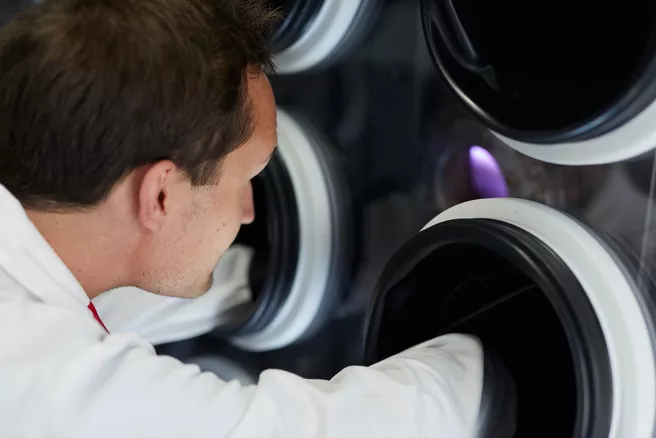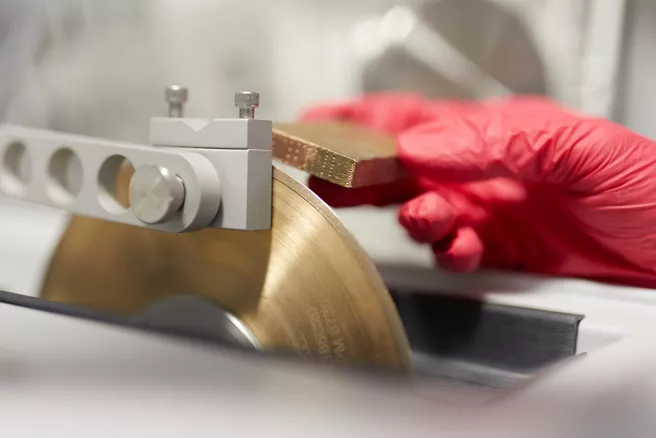International conference in Helsinki
The core topic of the RRFM conference from September 24-29, 2021 is the exchange of experience on the safe operation of research reactors, as well as the latest research results on the conversion of high-performance research reactors to a lower-enriched fuel, which is being pursued worldwide.
In this context, the latest findings on the development of new, high-density nuclear fuels as well as state-of-the-art simulation methods will be presented and discussed at the RRFM. Both the qualification of new fuels and precise computer simulations are essential for the conversion of especially high-power research reactors, such as the FRM II or HFIR in the USA. TUM is pursuing the conversion of FRM II to a fuel element with lower enrichment at high pressure. Thus, TUM scientists are again represented this year with a total of eight conference contributions, some together with the French fuel assembly manufacturer Framatome CERCA.
Further results on the latest irradiation tests of the three fuel candidates will be presented at the conference. A final evaluation is expected to be available in 2022.
The three fuel variants under investigation are:
- a high-density variant of the U3Si2 currently used in FRM II (high-density dispersed U3Si2)
- alloyed uranium-molybdenum (U-Mo) powder in Al matrix (dispersed U-Mo)
- alloyed U-Mo in foil form (monolithic U-Mo)
Together with its international partners in the HERACLES consortium TUM is pursuing these three fuel variants on an equal footing.
Safety has top priority
"Despite intensive research efforts by TUM and its international partners, there is so far no lower-enriched fuel qualified for use in the FRM II according to the global state of science and technology. In the meantime, however, we have entered the home stretch in the development of a suitable fuel," emphasizes the Scientific Director of FRM II, Prof. Dr. Peter Müller-Buschbaum (TUM). When deciding on a variant in the future, Müller-Buschbaum explains, among other things, the degree of enrichment, the preservation of the scientific performance of the neutron source and - of course - unrestricted safety during operation must be taken into account. In addition, long shutdown periods must be avoided during the refit. This can only be achieved by a scenario compatible with today's core.
Based on these three potential fuel candidates, the TUM working group is developing concrete conversion designs. These designs will be validated on the one hand by comparable but independent simulations at Argonne National Lab (USA), and on the other hand by experimental verification of the input data for these calculations at a measurement facility on heat transfer phenomena currently under construction at TUM. On this basis, a concrete retrofit scenario can be decided in early 2023.
Decision on fuel by 2023
The updated agreement to convert FRM II to a fuel with an enrichment of no more than 50% of fissile uranium-235 picks this up. In addition to the partnership-based financing of the conversion efforts, the federal and state governments reaffirm the goal of converting the research neutron source. The agreement regulates the next procedural steps on the way to this goal. For example, the federal and state governments will agree by 2023 at the latest, on the basis of the scientific findings available at that time, which of the three fuel variants currently being investigated should be considered for conversion. The approval process for the conversion will then be initiated.
Further information:
The Technical University of Munich, as operator of the Heinz Maier-Leibnitz Research Neutron Source (FRM II), is actively involved in international fuel research with the aim of developing new nuclear fuels with higher uranium density to reduce enrichment in fuel elements of high-performance research reactors such as the FRM II.
The TUM scientists in the "High Density Nuclear Fuels" research group are working closely with a large number of international partners from industry and science. In particular, the HERACLES consortium, an association of the operators of the European high-performance research reactors CEA (France), ILL (France), SCK-CEN (Belgium), Technische Universität München and the European fuel fabricators Framatome-CERCA (France), is working on this project. In addition, there are close collaborations with the US National Laboratories Argonne National Laboratory (ANL), Pacific-Northwest National Laboratory (PNNL), Idaho National Laboratory (INL), Los Alamos National Laboratory (LANL), and Oak Ridge National Laboratory (ORNL).
The research of the TUM working group "High Density Nuclear Fuels" is funded by a joint grant from the German Federal Ministry of Education and Research (BMBF) with the Bavarian State Ministry of Science and the Arts, as well as three HORIZON 2020 projects of the EU Commission (HERACLES-CP, LEU-FOREvER and EU-QUALIFY).

